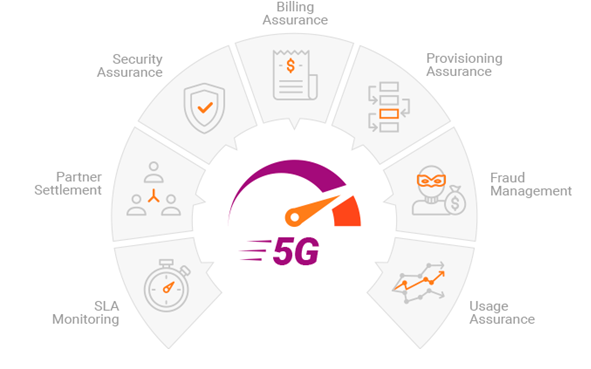Real-time 5G services bring higher customer expectations – and complexities – for revenue and business assurance

Carlos Marques of WeDo Technologies
In the first chapter of this three-part series looking into 5G use cases and the associated revenue and business assurance risks and challenges, we highlighted an imaginary 5G subscriber named ‘John’ who’s trip to a nearby concert involved using an autonomous car.
Unfortunately, John encountered several mishaps during his trip that can occur when a carrier’s business support systems (BSS) aren’t properly integrated along the value-chain. In this next chapter, we focus on Alice, who purchases a digital ticket to view the same concert through live streaming, says Carlos Marques, head of product marketing & analyst relations at WeDo Technologies.
The revenue from live streaming events was projected to deliver $545 billion (€482 billion) in 2018, according to Deloitte. The pivot towards live streaming began in 2017, when content platforms such as Facebook, Twitter, Amazon and YouTube, purchased the rights to live stream sports games, concerts, and even election specials directly to consumers.
The arrival of 5G will mean that distance or stadium capacity will no longer be a hindrance to concert goers, especially when technologies like VR and AR start to gain traction with consumers. However, for CSPs, there are several revenue and business assurance complexities that need to be addressed to ensure user experience expectations are met.
Let’s follow Alice’s customer journey
Alice wants to purchase a live streaming ticket for the upcoming concert, hosted by Amazon Prime. She is especially interested because as a Prime member, she gets a discount. The concert also has premium tickets that provide backstage access and Virtual Reality (VR) special features that Alice can add to her experience, but she opts for the standard ticket.
While this sounds like a straightforward use case, there are several opportunities where a breakdown in BSS integration across the value chain can create major revenue and business assurance headaches for CSPs:
1) Alice’s Prime discount doesn’t apply, due to a mismatch between the discount voucher and the configuration in the order management system. For Alice, she may abandon her plans to purchase the ticket or demand a refund on the discount that she was due from the CSP, which they will need to reimburse. Either scenario paints a poor customer experience because of basic configuration errors.
2) Alice accesses premium content: Due to configuration errors, Alice gains backstage access, which is premium content for concert goers – but was not included in Alice’s standard priced ticket. For the CSP, this increases the cost of the event because they will deliver the premium content to Alice, while being charged by the content partner provider – but they won’t be reimbursed by Alice for the additional services.
3) Alice accesses premium experiences: As the concert continues, Alice starts viewing the concert using 4K video on her TV, and later, decides to experience part of the concert through Virtual Reality, but these premium services weren’t included in her standard ticket. For the CSP, 4K video and VR run on different 5G slices, each with their own quality of service SLAs and pricing configurations. Not only has the CSP lost potential revenue by Alice accessing the premium experiences for free, the CSP also needs to ensure that the quality of service is met to provide a positive viewing experience. As Alice moves from 4K streaming to VR streaming, the CSP must provision the service upgrade in real-time, as well as measure and rate the content distribution at each level for accurate billing and margin analytics.
In scenarios #1 and #2, not only can these errors occur within the CSP’s OSS, but also with the partner’s (in this case Amazon Prime) service inventory and service activation systems. Real-time correlation between the CSP and the content provider’s OSS is needed in order to guarantee that there’s no revenue leakage. When we move to scenario #3, to guarantee no revenue leakage when 5G slices are used, the CSP needs to be able to drill down into the specific 5G slices to monitor the SLA metrics and ensure that the usage is accurately rated and charged back to the content provider.
As we can see, there are a multitude of opportunities for CSPs to experience revenue leakage as the digital ecosystem expands beyond traditional telecom providers as the one-size-fits-all service business model is shattered. CSPs will require an end-to-end risk management system that allows them to gain real-time information about how new business models and technology are impacting their business, spanning dynamic 5G slice assurance, provisioning assurance, usage assurance, SLA monitoring, billing validation, partner settlement and fraud management.
In chapter 3 of this three-part deep dive into 5G use cases and their risk implications for CSPs and their subscribers, we check back in on John as he returns home following the concert and encounters problems with his smart home security system. It’s a scenario rife with identify fraud, subscription fraud, partner churn and revenue leakage challenges for the CSP.
The author of this blog is Carlos Marques, head of product marketing & analyst relations, WeDo Technologies
Comment on this article below or via Twitter @IoTGN
